Identifying ACL injury risk factors in female athletes using technology.
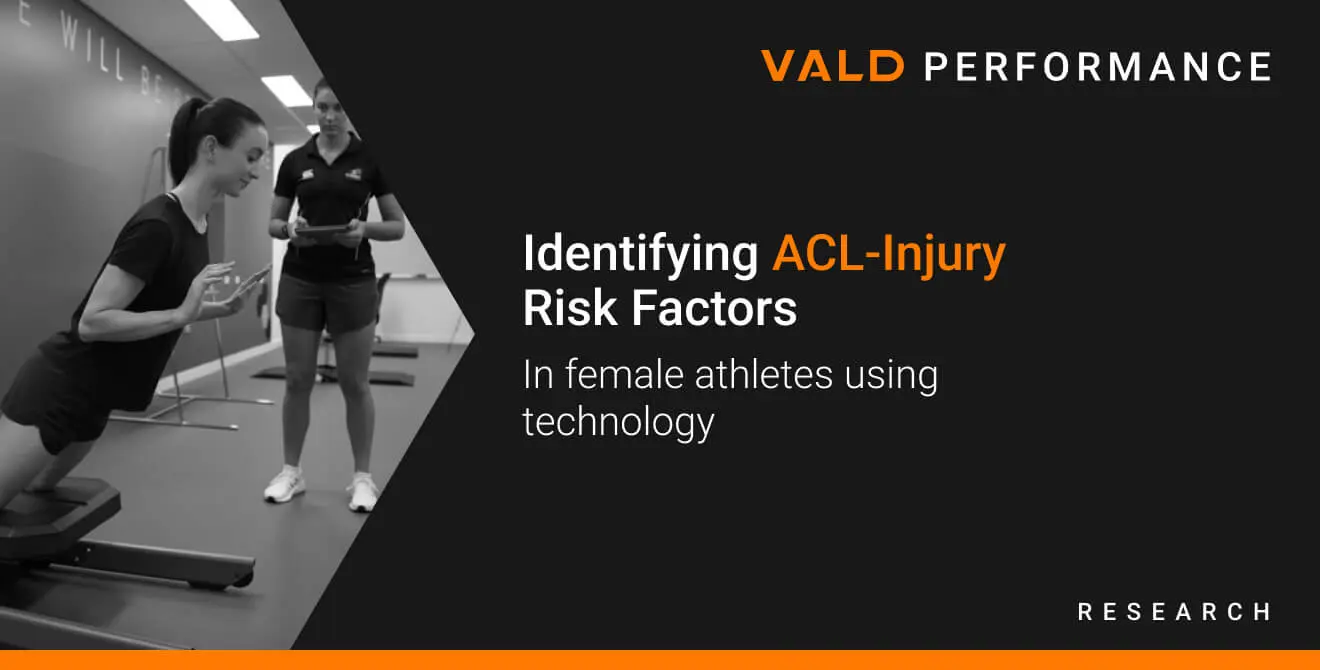
The ACL injury epidemic
ACL ruptures are increasingly common in field and court sports and occur 3-6 times more frequently in girls and women than boys and men. Alarmingly, Australia has the highest rates of ACL reconstruction in the world (which are also increasing at about 5% each year) and young females are most susceptible. Similar trends in knee injury rates have been observed in Finland, Southern Sweden and the United States.
However, even after surgical reconstruction and apparently successful rehabilitation, two-thirds of female athletes don’t return to their pre-injury levels of training and competition, a quarter experience a second ACL injury and 50-90% develop knee osteoarthritis in the subsequent 10-15 years.
Given the increasing prevalence and long-term consequences of injury, efforts to reduce ACL injury risk are a top priority for those working within women’s sport.
Even after surgical reconstruction and apparently successful rehabilitation, two-thirds of female athletes don’t return to their pre-injury levels of training and competition, a quarter experience a second ACL injury and 50-90% develop knee osteoarthritis
What causes ACL rupture?
In field and court sports, most ACL injuries occur without player contact, typically during forceful changes of direction, deceleration, or landing manoeuvres. At the time of injury, it is common to observe dynamic knee valgus (knee collapsing inwards), limited knee flexion, a lateral and rotated trunk position, and flat foot ground contact.
At the knee, peak ACL strain occurs as a result of multi-planar forces, involving an anterior tibial drawer force, knee valgus, and internal tibial rotation moments. Biomechanical factors suggested to be associated with increased risk of a first-time ACL injury include greater knee valgus moments and peak vertical ground reaction forces; however, until recently these factors have been difficult to measure outside of the laboratory.
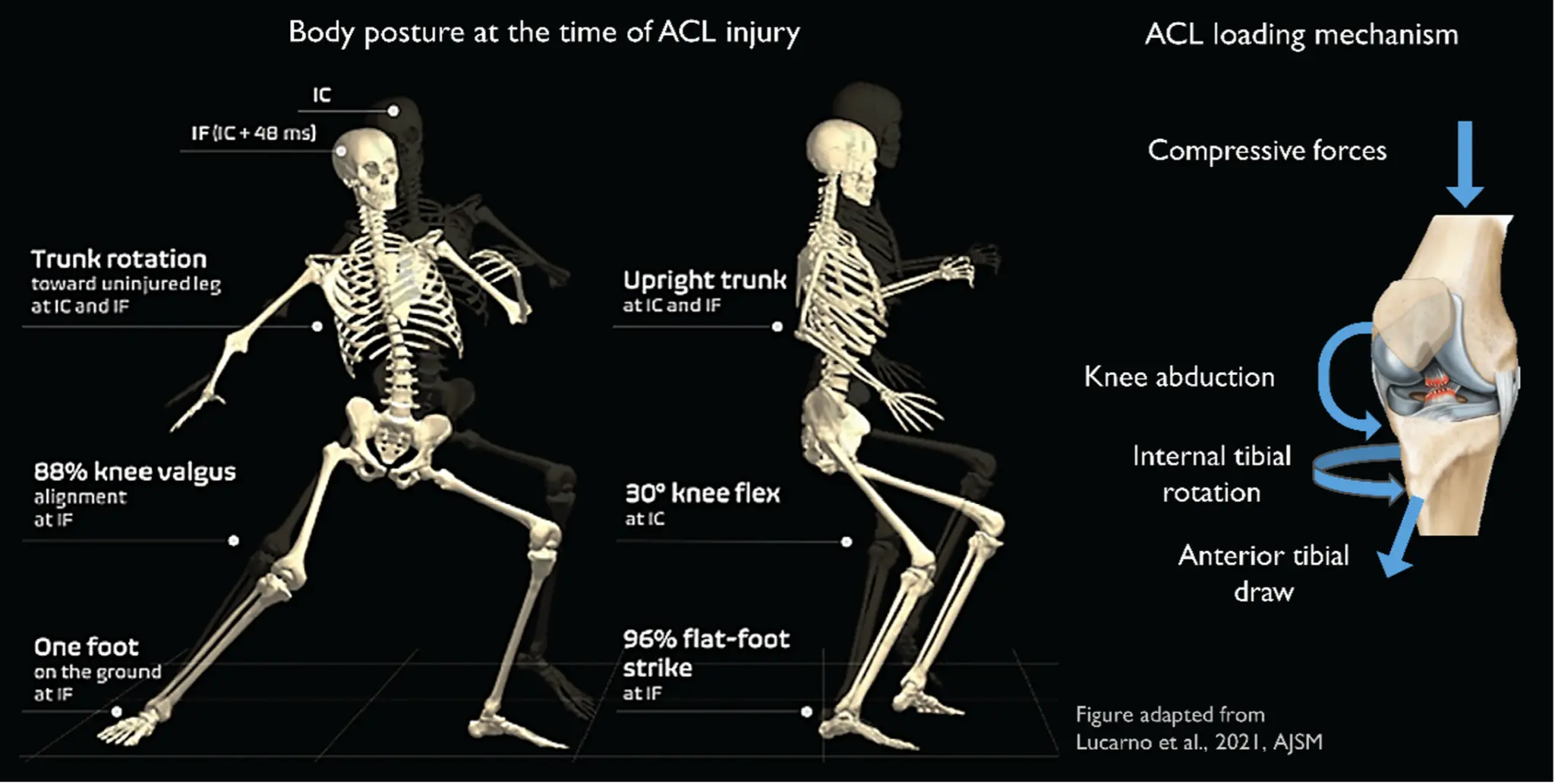
Why are girls and women more susceptible?
As women’s sport grows in participation and visibility at the elite level, the disparity in ACL injury rates between women’s and men’s competitions is increasingly apparent. Historically, biological and anatomical factors have been to blame for the disproportionately higher rates of ACL injuries in females than in males. Although some aspects of biology are likely important – for example, a narrow intercondylar notch may impinge the ACL and smaller ACL volumes may have lower tensile strength – most biological factors such as femur Q-angles and hormonal differences lack evidence.
As women’s sport grows in participation and visibility at the elite level, the disparity in ACL injury rates between women’s and men’s competitions is increasingly apparent.
Strength and biomechanical factors have been widely studied, and women generally display lower muscle strength and greater ACL loading compared to men. Many practitioners misinterpret that females are inherently at high risk because of their sex, however, strength and biomechanics are largely modifiable attributes.
Women generally display lower muscle strength and greater ACL loading compared to men. However, strength and biomechanics are largely modifiable attributes.
Across almost every sport – from grassroots to elite levels of competition – girls and women have reduced access to training facilities, resources (including coaching) and medical care compared with their male counterparts. Moreover, women are underrepresented in sport and exercise medicine research, which limits our understanding of predisposing risk factors and impedes the ability of coaches and practitioners to implement an evidence-based approach to training and rehabilitation.
Can we prevent ACL injury?
A meta-analysis of meta-analyses (a meta-meta-analysis?) revealed that ACL injury prevention programs reduce the risk of non-contact ACL injuries by two-thirds in female athletes. In female footballers, specifically, there is evidence that multicomponent “neuromuscular” exercise programs reduce the rates of ACL injury by 45%. However, compliance with these programs is poor and injury rates have shown limited evidence of a decline outside of these controlled studies.
Perhaps training programs that are effective in lower-level athletes are not effective or feasible in the more complex world of elite sport?
For example, less than 1 in 3 of these programs meet the guidelines for strength and 67% meet the guidelines for plyometric/power training. It might also be argued that our improved understanding of injury prevention is failing to keep pace with the increased demands of training and competition.
However, in our recent systematic review (Lima, under review), we demonstrate that ACL injury prevention programs also fail to change lower limb biomechanics during high-risk tasks, which begs the question: what is the mechanism(s) by which they prevent ACL injury?
Applying field-based technology to identify female athletes at risk for ACL injury
Understanding the factors that increase an athlete’s risk of injury represents the first step towards developing targeted injury prevention interventions. Until recently, no studies had investigated ACL injury risk factors in elite women’s Australian footballers or soccer players – the former of which appear to have the highest rates of ACL injury of any sport worldwide.
Until recently, no studies had investigated ACL injury risk factors in elite women’s Australian footballers or soccer players – the former of which appear to have the highest rates of ACL injury of any sport worldwide
Using a 10-minute field-based testing battery in preseason, we tested 322 elite female footballers’ isometric hip abductor and adductor strength, eccentric knee flexor strength, bilateral countermovement jump (CMJ) kinetics, and single leg triple-vertical hop kinematics using VALD’s ForceFrame, NordBord, ForceDecks and HumanTrak, respectively (Collings et al., 2022). Non-contact ACL injuries that occurred in the subsequent 18 months were recorded so that we could attempt to identify how players who sustained an injury differed from those who did not.
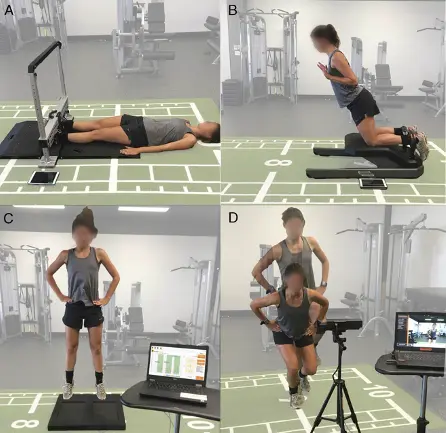
- Isometric hip adductor and abductor strength (ForceFrame).
- Eccentric knee flexor strength during the Nordic hamstring exercise (NordBord).
- Bilateral CMJ on portable force plates (ForceDecks).
- Single-leg triple vertical hop kinematics using a markerless motion capture system (HumanTrak).
What did we find?
The results revealed that a number of factors were associated with an increased risk of future non-contact ACL injury, specifically:
- lower hip adductor to abductor strength ratios,
- greater vertical hop dynamic knee valgus and ipsilateral trunk flexion angles,
- larger CMJ peak take-off forces, and,
- previous ACL injury.
You can find normative data for all our test results here
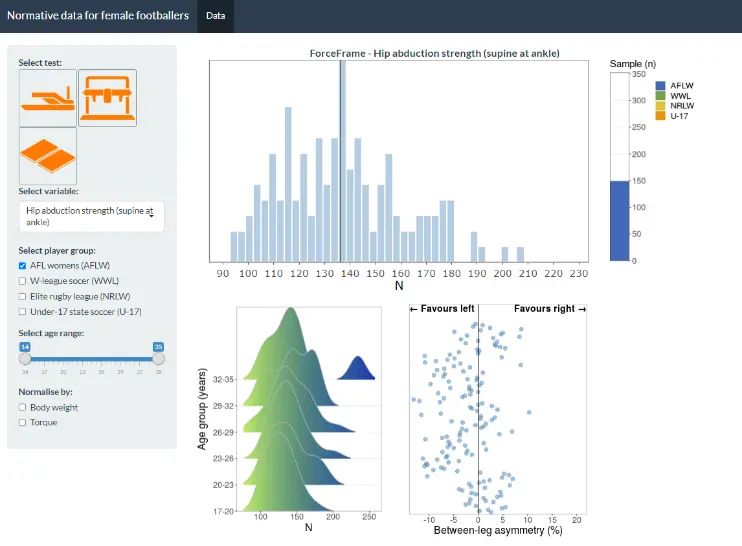
Hip strength
Players with stronger hip abductors relative to their adductors were at increased risk for future ACL injury (1.97x greater odds of injury for every 14% decrease in the isometric adductor to abductor strength ratio).
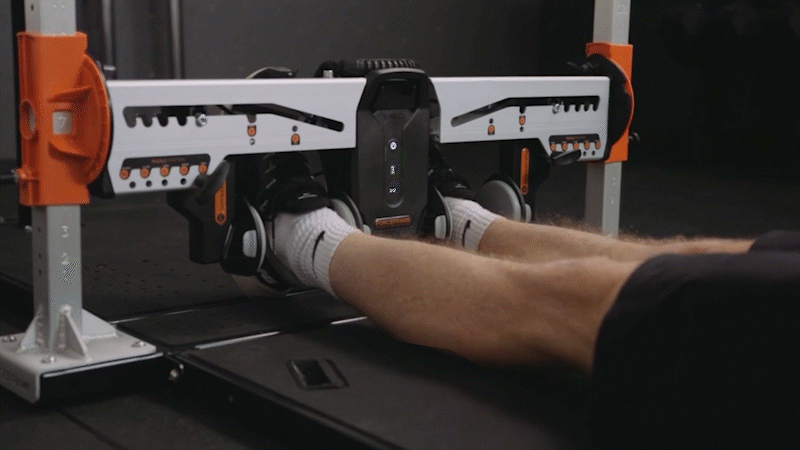
The mechanism(s) explaining this association is unclear, however, an imbalance between these two muscle groups may influence coordination of the hip joint during high-risk tasks like jumping and changing direction.
Single-leg triple vertical hop kinematics
Landing with greater dynamic knee valgus and ipsilateral trunk flexion angles (i.e., towards the stance leg) significantly increased the risk of subsequent ACL injury. Dynamic knee valgus occurs from the combination of hip internal rotation and adduction, knee abduction, and ankle eversion.
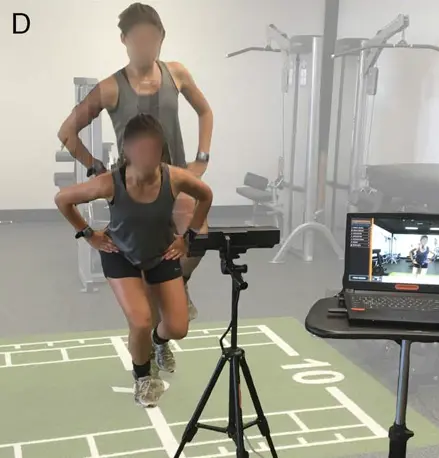
Females typically display greater dynamic knee valgus than males during high-risk landing tasks, however, evidence for an association with ACL injury risk is less clear. Ipsilateral trunk flexion increases the knee abduction moment via increasing the moment arm of the trunk relative to the knee joint, which may also increase ACL loads.These data suggest that strategies targeted at reducing dynamic knee valgus and lateral trunk flexion when landing on one leg may reduce the risk of future ACL injury.
CMJ kinetics
Players who produced greater CMJ peak take-off forces were at significantly greater risk of subsequent ACL injury than those who produced lower forces. The quadriceps and gastrocnemius make a significant contribution to vertical ground reaction forces during jumping, and these muscles are also responsible for generating most of the load on the ACL during landing and changing direction.
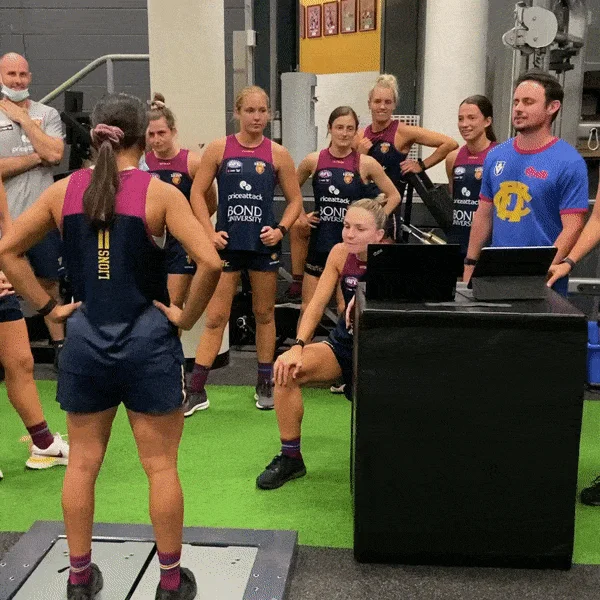
Perhaps training to promote strength and hypertrophy of the quadriceps and gastrocnemius to improve jumping performance unknowingly increases the risk of ACL injury?
Despite this possibility, reducing jumping forces to protect against ACL injury risk is obviously a counterproductive approach for players who wish to perform at the highest level. Instead, female athletes who generate high CMJ forces may benefit from interventions targeted at decreasing knee joint loads or developing the muscles capable of “unloading” the ACL (i.e., the hamstrings, gluteals and soleus).
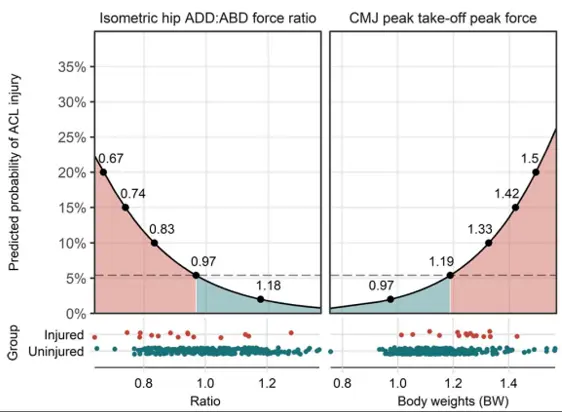
Combining field-based measures improves estimates of injury risk
When combined in a multivariable clinical prediction model, our field-based screening battery correctly identified almost 4 in 5 of the players who sustained a subsequent ACL injury.
However, the individual variables by themselves were only marginally better at predicting injury than flipping a coin. This is an important point to understand when assessing player injury risk.
When combined in a multivariable clinical prediction model, our field-based screening battery correctly identified almost 4 in 5 of the players who sustained a subsequent ACL injury.
Individual variables are poor indicators of injury risk because they are unable to capture the complexity of injury and account for the high variation among individuals. Much more accurate assessments of injury risk requires performing a testing battery and combining important variables into a multivariable model. However, this can only be achieved with large datasets of individuals along with their injury records. Development and validation of such models is an exciting area of research that can then be translated for use in clinical practice.
What about between-limb asymmetries in strength and biomechanics?
We found no convincing evidence that between-leg asymmetries in strength and biomechanics were related to ACL injury risk. Subsequently injured and uninjured players both displayed 10-20% asymmetries in lower limb strength, and 10-50% asymmetries in CMJ ground reaction force variables, suggesting that a degree of asymmetry is “normal”, at least in elite female footballers.
We did observe that “non-directional” asymmetry in eccentric knee flexor strength on the NordBord was associated with an increased risk of subsequent ACL injury
Interestingly, we did observe that “non-directional” asymmetry in eccentric knee flexor strength on the NordBord was associated with an increased risk of subsequent ACL injury, however, the stronger leg was injured just as frequently as the weaker leg. Eccentric knee flexor weakness is commonly observed following ACL reconstruction and is likely a consequence of surgery involving hamstring grafts rather than an independent risk factor for first-time injury.
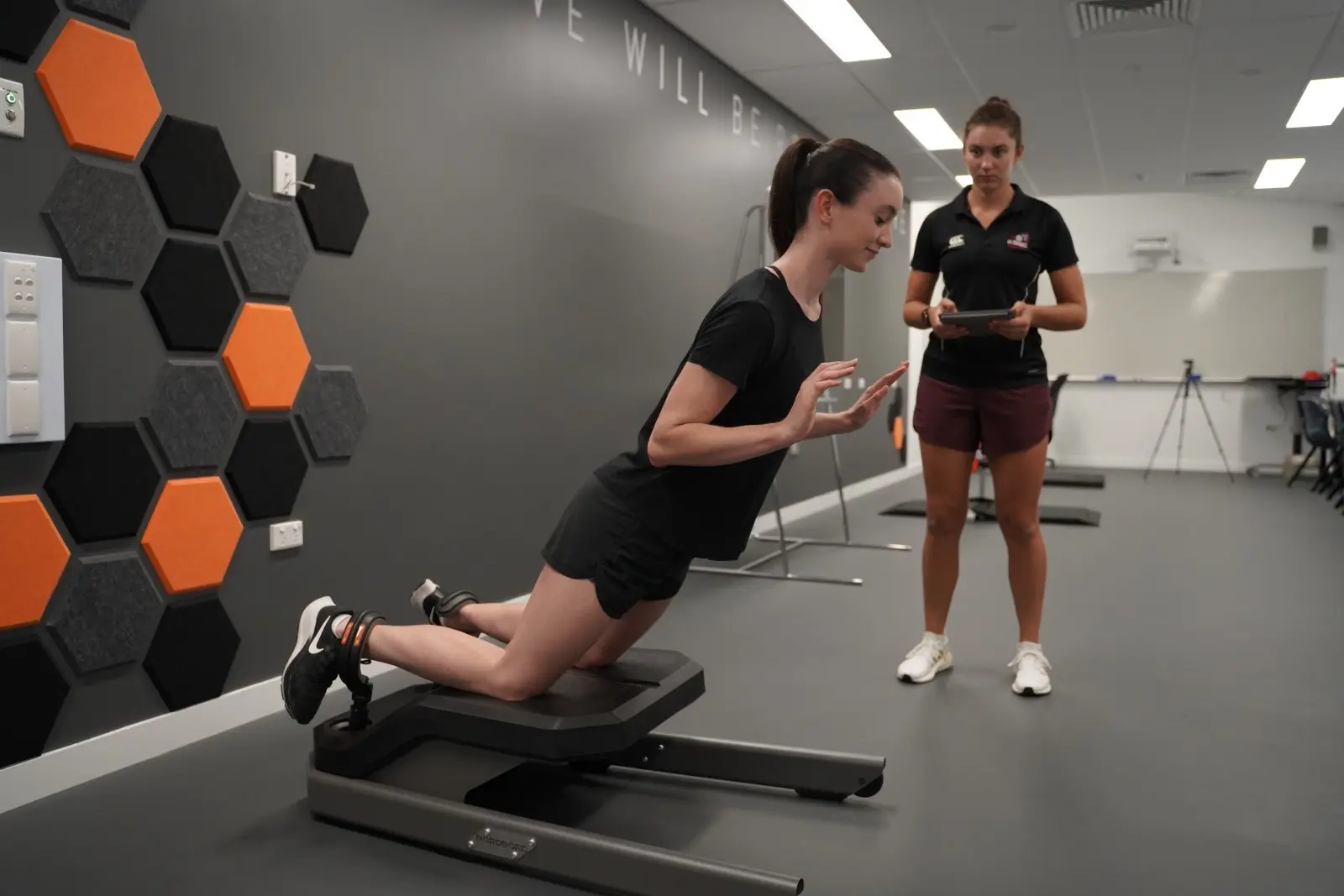
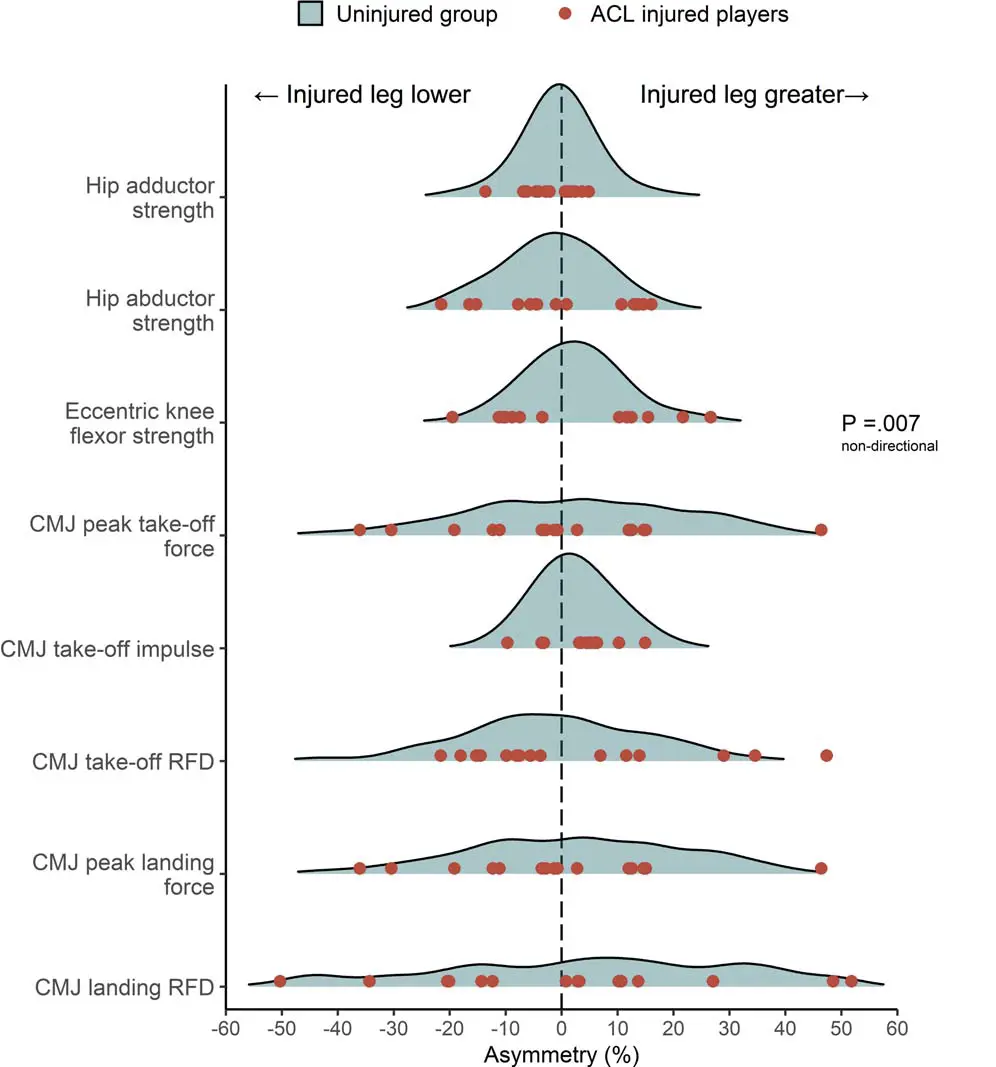
Figure 4. Between-leg asymmetry in hip strength, knee flexor strength, and CMJ kinetics for players who sustained an ACL injury (ACL injured players) and players who did not (uninjured group). Uninjured players (n < 262) are represented by density curve, with shaded areas indicating increasing amounts of asymmetry. Players who sustained an ACL injury are presented with black dots. Significant variables indicated with a P value. Figure replicated from Collings et al 2022
Prior ACL injury
In our study, female footballers with any history of ACL injury were 9.7 times more likely to sustain a subsequent ACL injury than those without. Prior ACL injury has consistently been shown to be the strongest predictor of a subsequent ACL injury in female field and court sports.
Female footballers with any history of ACL injury were 9.7 times more likely to sustain a subsequent ACL injury than those without.
Although the mechanisms underpinning high rates of injury recurrence are not fully understood, we have previously shown that female athletes display deficits in lower limb structure and function that persist for many years after injury.
Interestingly, previously injured athletes tend to exhibit a distinct physical profile characterised by between-leg asymmetries in eccentric knee flexor strength, isometric hip abduction strength, and peak landing forces, which distinguishes them from uninjured players with 93% accuracy.
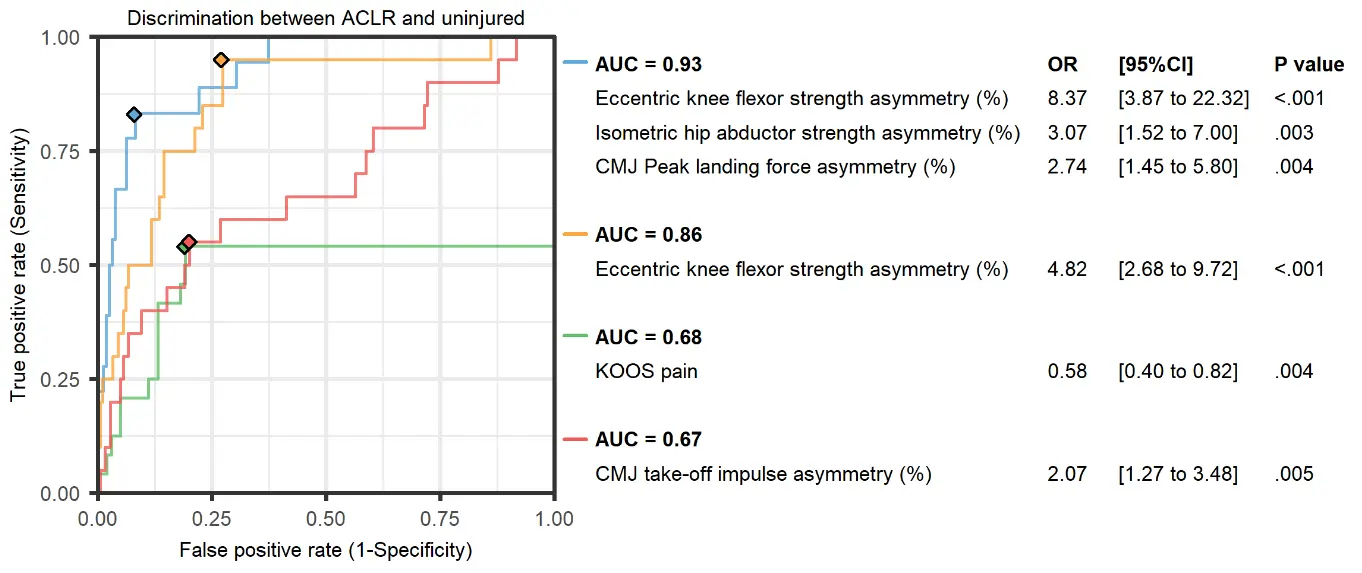
Previously injured athletes tend to exhibit a distinct physical profile characterised by between-leg asymmetries in eccentric knee flexor strength, isometric hip abduction strength, and peak landing forces, which distinguishes them from uninjured players with 93% accuracy.
Our recent systematic review and meta-analysis also revealed chronic deficits in several force-plate derived measures of vertical jump performance lasting well beyond the completion of apparently successful rehabilitation. During bilateral jumping tasks, individuals with a history of ACLR display an offloading strategy whereby they favour their uninjured contralateral limb, likely as a protective mechanism to shield the injured limb from excessive force (Figure 5).
During bilateral jumping tasks, individuals with a history of ACLR display an offloading strategy whereby they favour their uninjured contralateral limb
During unilateral jumping, the ACLR limb displayed a lack of explosive strength with deficits seen across all jump types and force-plate derived metrics. More work is needed to understand if these deficits increase the risk of re-injury, and whether they can be redressed via targeted training.
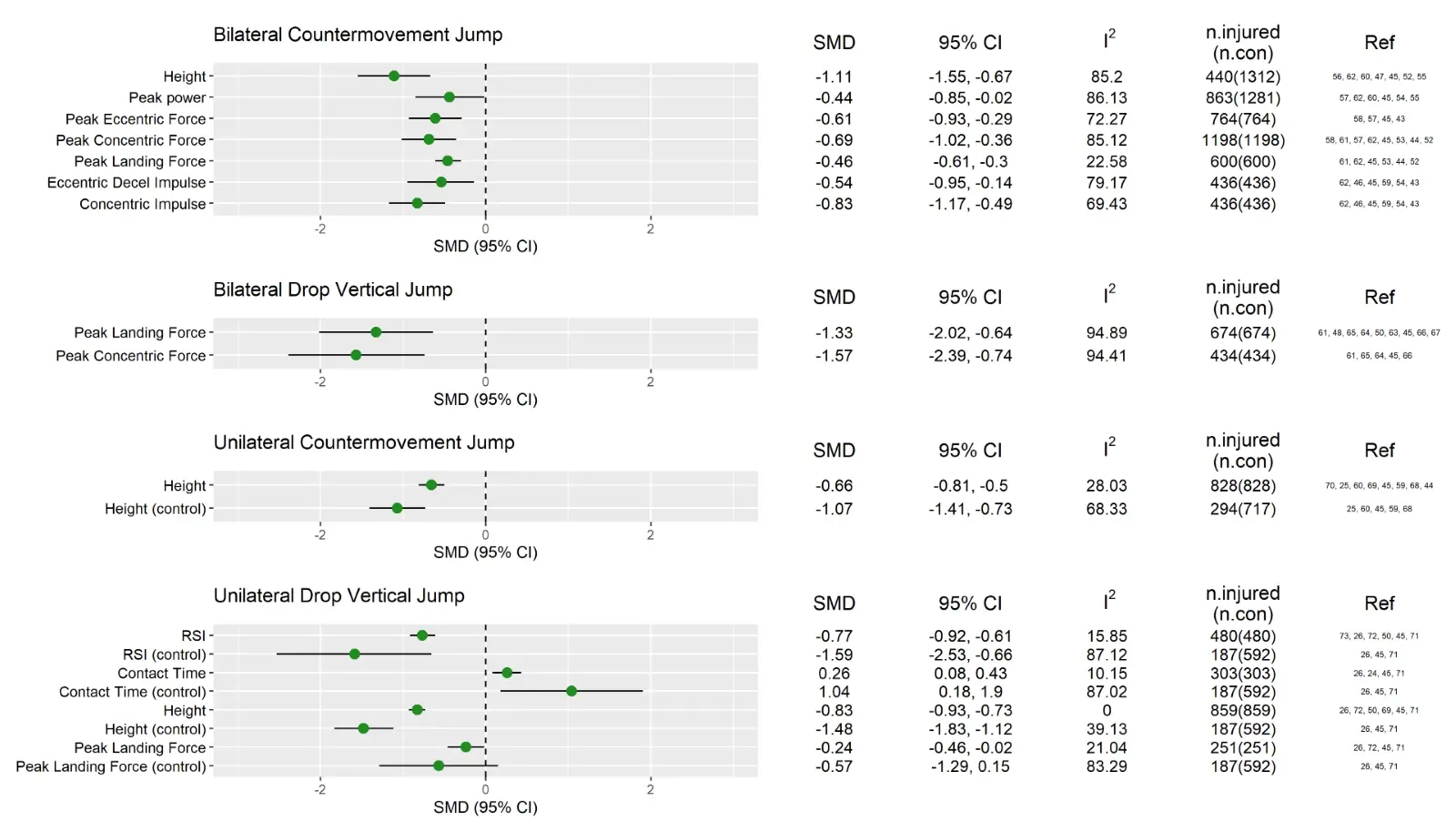
Figure 5. Overview of meta-analyses from Dutaillis et al 2023. On the left, standardised means differences (SMD; circles) are plotted with 95% confidence intervals (95% CI; error bars) with a negative effect representing a lower value in the anterior cruciate ligament reconstructed (ACLR) limb or individual. Green circles represent comparisons of ACLR limb/individual to uninjured controls. Blue circles represent comparisons of ACLR limb to uninjured contralateral limb. On the right, values for SMD, 95% CI, heterogeneity (I2), number of ACLR (n.injured) and contralateral/control (n.uninjured) limbs/individuals, and references (Ref) for each meta-analysis are reported.
During unilateral jumping, the ACLR limb displayed a lack of explosive strength with deficits seen across all jump types and force-plate derived metrics.
So… where do we go from here?
The success of female athletes on the world stage has fuelled a long overdue rise in the professionalism and profile of female sports. However, girls and women still face many barriers to sports participation and high-performance including unacceptably high rates of ACL injuries.
Girls and women still face many barriers to sports participation and high-performance including unacceptably high rates of ACL injuries
Despite significant research efforts over several decades, ACL injury prevention strategies are still heavily influenced by clinical assumptions and expert opinion rather than empirical evidence. Innovative, field-based human measurement technologies that allow for rapid, reliable and objective measures of strength and biomechanics provide an opportunity to significantly improve clinical decision-making.
Innovative, field-based human measurement technologies that allow for rapid, reliable and objective measures of strength and biomechanics provide an opportunity to significantly improve clinical decision-making.
Appropriately developed and validated clinical prediction models built using combination of these field-based tests show promise in being able to identify which athletes are at risk of ACL injury, and perhaps one day, might inform the design of personalised risk reduction strategies.
Ultimately, solving the ACL injury crisis will likely require the development and application of robust tools to understand player injury risk and the implementation of targeted training interventions to address the underlying causes of injury (e.g. injury mechanisms and causal risk factors).
For more information, contact the VALD team here.


Dr Matthew Bourne is a Senior Lecturer and Senior Research Fellow in Griffith University’s Centre of Biomedical and Rehabilitation Engineering (GCORE) and currently holds an Advance Queensland Mid-Career Industry Research Fellowship with VALD. His research focusses on the development and application of next-generation, clinic-friendly technologies to identify athletes at risk of hamstring and knee injuries and inform the design of evidence-based prevention strategies. Dr Bourne’s team partners with industry to democratise access to technology and generate high-impact applied research, with global outcomes.
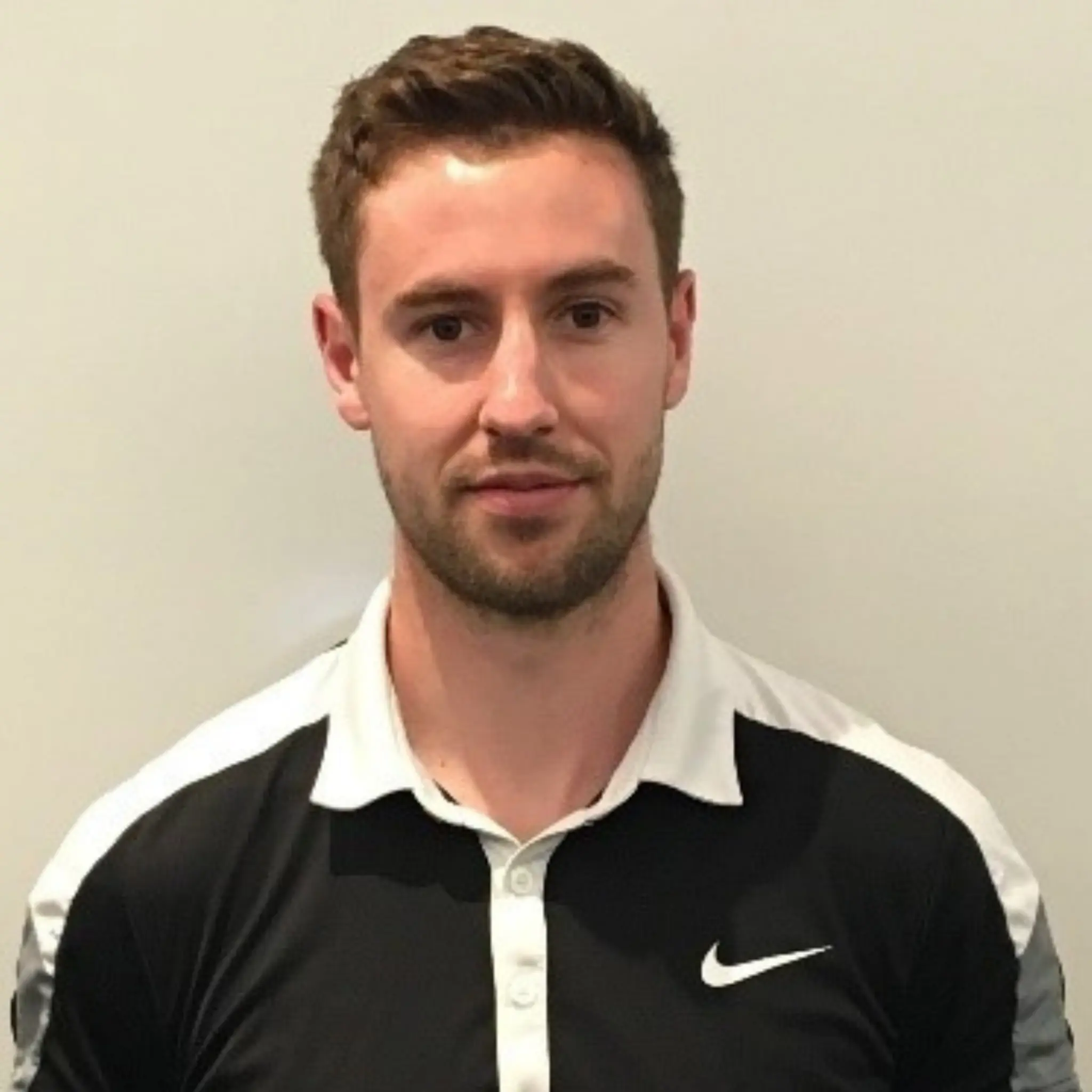

Dr Tyler Collings is an early career researcher and lecturer at Griffith University, Gold Coast and is a member of the Griffith University GCORE research group. His primary research interests are in ACL injury prevention, rehabilitation, neuromusculoskeletal modelling, and field/clinic-based technology for assessing biomechanics. His PhD examined ACL injury risk in female footballers resulting in novel insights regarding how to apply sports technology when injury screening and designing training strategies.


Benjmain Dutaillis is a PhD candidate in Griffith University GCORE research group. His research is focussed on improving rehabilitation outcomes from ACL reconstruction. Benji is also employed as an accredited exercise physiologist and strength and conditioning coach at the Gold Coast Knee Group.
References
- Lucarno S, Zago M, Buckthorpe M, et al. Systematic video analysis of anterior cruciate ligament injuries in professional female soccer players. Am J Sports Med. 2021;49(7):1794–802.
- Collings TJ, Bourne MN, Barrett RS, du Moulin W, Hickey JT, Diamond LE. Risk factors for lower limb injury in female team field and court sports: a systematic review, meta-analysis, and best evidence synthesis. Sports Med. 2021;51(4):759–76.
- Hewett TE, Myer GD, Ford KR, et al. Biomechanical measures of neuromuscular control and valgus loading of the knee predict anterior cruciate ligament injury risk in female athletes: a prospective study. Am J Sports Med. 2005;33(4):492–501.
- Collings TJ, Diamond LE, Barrett RS, Timmins RG, Hickey JT, DU Moulin WS, Williams MD, Beerworth KA, Bourne MN. Strength and Biomechanical Risk Factors for Noncontact ACL Injury in Elite Female Footballers: A Prospective Study. Med Sci Sports Exerc. 2022 Aug 1;54(8):1242-1251. doi: 10.1249/MSS.0000000000002908.
- Maniar N, Schache AG, Sritharan P, Opar DA. Non-knee-spanning muscles contribute to tibiofemoral shear as well as valgus and rotational joint reaction moments during unanticipated sidestep cutting. Sci Rep. 2018;8(1):2501.
- Nasseri A, Lloyd DG, Bryant AL, Headrick J, Sayer TA, Saxby DJ. Mechanismof anterior cruciate ligament loading during dynamicmotor tasks. Med Sci Sports Exerc. 2021;53(6):1235–44.
- Collings TJ, Diamond LE, Barrett RS, et al. Impact of prior anterior cruciate ligament, hamstring or groin injury on lower limb strength and jump kinetics in elite female footballers. Phys Ther Sport. 2021;52:297–304.
- Crossley KM, Patterson BE, Culvenor AG, Bruder AM, Mosler AB, Mentiplay BF. Making football safer for women: a systematic review and meta-analysis of injury prevention programmes in 11 773 female football (soccer) players. Br J Sports Med. 2020;54(18):1089–98.
- Webster KE, Hewett TE. Meta-analysis of meta-analyses of anterior cruciate ligament injury reduction training programs. J Orthop Res. 2018 Oct;36(10):2696-2708.
- Dutaillis B, Diamond LE, Lazarczuk SL, Timmins RG, Bourne MN. Vertical Jump Testing Following Anterior Cruciate Ligament Reconstruction: A Systematic Review and Meta-analysis. Med Sci Sports Exerc. 2023 Sep 13. doi: 10.1249/MSS.0000000000003298.
